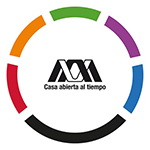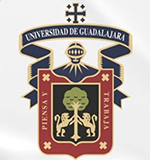Antonio Narro Agrarian Autonomous University is described as follows:
Introduction: The university is a public university in Mexico that focuses on agriculture, forestry, animal production, food and environmental sciences. It plays an important role in the agricultural sector in Latin America and has a high academic level in agriculture and animal industry that is recognized nationally and internationally.
Overview: The main campus is located 6 km south of Saltillo, Coahuila, and there is also a campus in Torreón. In 2008, there were about 4,500 students in both campuses, all studying agriculture and related sciences. The school has 617 administrative staff, and in 2000, there were 3,344 undergraduates and 278 postgraduates.
History and founding date: On March 4, 1923, philanthropist Antonio Narro Rodríguez donated his Buenavista estate to establish the "Antonio Narro Regional Agricultural School". Over the years, the name of the school has changed several times. In 1938, it became the Higher Agricultural School, in 1957 it became the founding institution of the University of Coahuila, in 1975 it became the Antonio Naro Agricultural Autonomous University by decree of the Coahuila State Congress, and on April 26, 2006, it was approved by the House of Representatives and Senate of Mexico and announced by the President in the Federal Gazette, and was recognized as a federal university.
School Strength: It is one of the most important agricultural colleges in Latin America. It has strong teaching and scientific research strength in the fields of agriculture and animal sciences. It has trained a large number of professionals for related industries. It has cooperative relations with many agricultural institutions and enterprises at home and abroad, providing students with practical opportunities and employment channels.
Institutional Nature: It is a public university, funded and managed by the government, dedicated to cultivating professionals in agriculture and related fields for Mexico and surrounding areas, promoting the development of agricultural science and technology and the progress of rural areas.
Educational Philosophy: There is no clear and public educational philosophy, but judging from its focus on agriculture and related scientific education, it should be committed to cultivating agricultural professionals with solid professional knowledge, practical ability and innovative spirit, focusing on the combination of theory and practice to meet the development needs of the agricultural industry.
Key laboratories and disciplines: No public key laboratory information is available. Key disciplines include agronomy, horticulture, animal science, food science and technology, agricultural engineering, etc. These disciplines have achieved remarkable results in teaching and scientific research, providing students with rich courses and practical opportunities to cultivate students' professional skills in various fields of agriculture.
Faculty: No specific department information is clearly mentioned, but judging from the professional settings, there may be multiple departments such as the College of Agriculture, College of Forestry, College of Animal Science, College of Food Science, and College of Agricultural Engineering.
Ranking: It is not clearly listed in the common world university rankings such as QS and U.S. News, but it is in a leading position among agricultural colleges in Latin America.
Cost: No clear tuition information is available. As a public university, tuition fees are usually relatively low, and scholarships, grants and other financial assistance may be provided to eligible students.
Campus environment: The main campus covers an area of more than 4 square kilometers and is located in a fertile valley south of the city of Saltillo. The climate is semi-arid, with occasional freezing and an annual rainfall of about 300 mm. There are experimental fields and demonstration fields on campus, where a variety of crops and fruit trees are grown, as well as greenhouses, animal production facilities, forest farms and botanical gardens. In addition, the school has several agricultural experimental fields throughout Mexico, covering a variety of climates from the humid tropics to the Chihuahuan Desert.
-

National Autonomous University of Mexico
-

Anahuac University of North Mexico
-

Universidad Autonoma de Guadalajara
-

Universidad ETAC
-

Meritorious Autonomous University of Puebla
-

Technological University of Tulancingo
-

Metropolitan Autonomous University
-

Autonomous University of Sinaloa
-

University of Guadalajara
-

Technological University of Huejotzingo
-

Mesoamerican University
-

Istmo University
-

Mariano Galvez University of Guatemala
-

Regional University of Guatemala
-

Galileo University
-

Francisco Marroquín University
-

Rafael Landívar University
-

University of the Valley of Guatemala
-

University of San Carlos of Guatemala
-

Technological Institute of Tlaxcala Plateau
-

Golfo University
-

Technological University of South Sonora
-

Technological University of Huejotzingo
-

Tizimín Institute of Technology
-

Chilpancingo Institute of Technology

